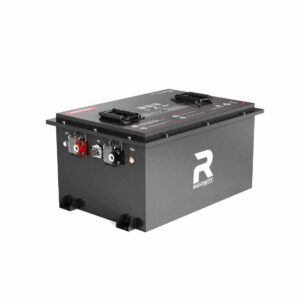What Are the Best RV Batteries for Extended Boondocking Adventures?
Featured Snippet Answer: Lithium iron phosphate (LiFePO4) batteries are the optimal choice for extended RV boondocking due to their deep cycle capability, lightweight design, and longer lifespan compared to AGM or lead-acid alternatives. They provide consistent power output, faster recharge rates, and perform better in extreme temperatures, making them ideal for off-grid adventures.
How Do Lithium Batteries Outperform Traditional RV Batteries?
Lithium batteries offer 80-100% usable capacity versus 50% in lead-acid, reducing weight by 60% while delivering 3,000-5,000 cycles. Their stable voltage output ensures appliances run efficiently throughout discharge, unlike AGM batteries that lose power gradually. Built-in battery management systems prevent over-discharge, a critical advantage when camping remotely without shore power.

What Makes AGM Batteries a Viable Backup Option?
AGM batteries remain popular for occasional boondockers due to their lower upfront cost and maintenance-free operation. While offering only 50% usable capacity, their spill-proof design and vibration resistance make them suitable for secondary power banks or short weekend trips. Many RVers use AGM as starter batteries while dedicating lithium banks to house systems.
For budget-conscious travelers, AGM provides reliable performance in moderate climates at 30-50% lower initial cost. Their tolerance for partial state-of-charge conditions makes them more forgiving than flooded lead-acid batteries during irregular use. However, frequent deep cycling below 50% capacity dramatically shortens their lifespan compared to lithium alternatives.
| Feature | AGM | Lithium |
|---|---|---|
| Cost per Ah | $0.70-$1.20 | $1.50-$2.50 |
| Cycle Life | 500-800 | 3,000-5,000 |
| Recharge Time | 8+ hours | 4-5 hours |
Why Is Battery Capacity Planning Crucial for Off-Grid RVing?
Calculate energy needs by auditing appliances: a 12V fridge (3Ah), LED lights (0.5Ah), and inverter (8Ah) require 150-300Ah daily. Lithium’s 100% depth of discharge allows smaller banks versus AGM’s 50% limit. Pair with solar panels (400W minimum) and DC-DC chargers to maintain charge during multi-day stays in remote locations.
Advanced users should factor in phantom loads from propane detectors (0.3Ah) and inverter standby draw (0.8Ah). A typical week-long boondocking setup for four people requires:
- 400Ah lithium battery bank
- 600W solar array
- 40A DC-DC charger
- 2000W pure sine wave inverter
This configuration ensures reliable power for essential systems while allowing occasional use of microwaves or air fryers.
How Does Temperature Affect RV Battery Performance?
Lithium batteries operate at -4°F to 140°F versus AGM’s 32°F-104°F range. Cold reduces lead-acid capacity by 40-50%, while lithium maintains 80% efficiency. Use heated battery compartments or self-warming LiFePO4 models for sub-zero expeditions. Avoid direct sunlight exposure—battery life degrades 10% for every 15°F above 77°F ambient temperature.
Can Solar Panels Fully Recharge RV Batteries Off-Grid?
A 600W solar array with MPPT controller can recharge 400Ah lithium banks in 5-6 sun hours. AGM requires 8+ hours due to absorption stage limitations. Lithium’s acceptance of 1C charge rates (vs 0.2C for AGM) enables faster recovery. Always oversize solar capacity by 30% to account for cloudy days and partial shading.
What Safety Features Do Modern RV Batteries Include?
Top lithium models feature multi-layer protection: short-circuit current limitation, cell voltage monitoring, and temperature cutoff. Battle Born and Redway batteries add compression plates to prevent cell swelling. AGM batteries risk hydrogen gas emission—ensure proper venting. UL1973 certification is mandatory for fire safety in enclosed RV battery compartments.
“Modern RVers demand batteries that match their adventurous spirit. Our Redway LiFePO4 series uses automotive-grade prismatic cells with 15-year thermal stability—critical when boondocking in Death Valley or Alaska. Pair with a modular design; users can expand from 100Ah to 1200Ah without complex wiring.”
— John Michaels, RV Power Systems Engineer, Redway
Conclusion
Selecting the right RV battery requires balancing cycle life, weight, and upfront cost. Lithium batteries dominate for long-term boondocking despite higher initial investment, while AGM serves budget-conscious users with shorter trips. Always integrate battery monitoring systems and prioritize warranties—top lithium brands offer 10-year coverage versus AGM’s 3-year average.
FAQs
- Q: How often should I replace RV batteries?
- A: Lithium lasts 10-15 years (3,000+ cycles) vs AGM’s 4-6 years (800 cycles). Replace when capacity drops below 80%.
- Q: Can I mix lithium and AGM batteries?
- A: Never mix chemistries. Different charge profiles cause over/undercharging. Use dedicated battery banks.
- Q: What’s the lightest 100Ah RV battery?
- A: Lithium options weigh 25-31 lbs versus 60-70 lbs for AGM. Redway’s 100Ah model is 28.7 lbs with handles.
